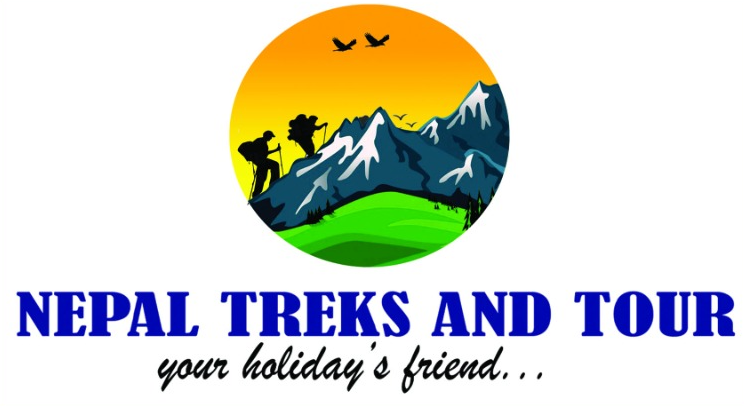Nepal is a paradise for trekkers. Home to 8 of the world’s 14 highest mountains, including Mount Everest, it offers adventures for beginners to seasoned climbers. From short scenic hikes to high-altitude expeditions, trekking in Nepal connects you with breathtaking Himalayan landscapes, diverse cultures, and warm-hearted locals.
Whether you want a short 4-day trek to Poon Hill or a challenging 3-week circuit around Manaslu, Nepal has a trek for everyone.
Best Trekking Regions in Nepal
1. Everest Region Treks
Everest Base Camp Trek (12–14 Days) – The classic trek to the foot of the world’s tallest peak.
Gokyo Lake Trek (13 Days) – Stunning turquoise lakes and a quieter alternative to EBC.
Everest View Trek (5–7 Days) – Short trek for those wanting Everest views without going too high.
2. Annapurna Region Treks
Annapurna Base Camp Trek (7–10 Days) – Walk through forests, villages, and glaciers to ABC (4130m).
Annapurna Circuit Trek (12–15 Days) – Famous for crossing Thorong La Pass (5416m).
Mardi Himal Trek (5–7 Days) – A hidden gem with panoramic views and fewer crowds.
3. Langtang Region Treks
Langtang Valley Trek (7–10 Days) – Known as “the valley of glaciers.” Close to Kathmandu yet full of Himalayan beauty.
Langtang + Gosaikunda Lake Trek (12–14 Days) – Combines valleys, holy lakes, and mountain passes.
4. Restricted & Off-Beaten Treks
Manaslu Circuit Trek (14–16 Days) – Remote, culturally rich, and less crowded than Annapurna.
Upper Mustang Trek (12–15 Days) – A unique desert-like landscape with Tibetan culture.
Kanchenjunga Trek (20+ Days) – Wild and untouched trekking in eastern Nepal.
When is the Best Time for Trekking in Nepal?
Autumn (Sept–Nov) – Clear skies, stable weather, and best mountain views.
Spring (Mar–May) – Rhododendron forests in full bloom, warm weather, and colorful landscapes.
Winter (Dec–Feb) – Good for short treks at lower altitudes.
Summer/Monsoon (Jun–Aug) – Lush greenery, fewer trekkers, but heavy rain in some regions.
Trekking Permits in Nepal
Different regions require trekking permits. The common ones are:
TIMS Card (Trekkers’ Information Management System)
Annapurna Conservation Area Permit (ACAP)
Sagarmatha National Park Entry Permit
Restricted Area Permits (for Upper Mustang, Manaslu, etc.)
Essential Tips for Trekking in Nepal
Acclimatize properly to avoid altitude sickness.
Carry cash (ATMs not available in remote regions).
Hire a licensed guide/porter for safety and local knowledge.
Pack light but include essentials like down jackets, trekking boots, and water purification.
Respect local culture and environment – “Leave no trace.”
Why Choose Nepal for Trekking ?
✔️ World’s best trekking trails
✔️ Wide choice of short & long treks
✔️ Affordable compared to other countries
✔️ Rich culture, history & nature in one journey
Most Searched FAQs About Trekking in Nepal
1. What is the best time for trekking in Nepal?
The best trekking seasons are autumn (September–November) and spring (March–May) when the weather is clear and stable.
2. Do I need a permit for trekking in Nepal?
Yes, most treks require permits like the TIMS card and National Park/Conservation Area entry permits. Restricted areas need special permits.
3. How difficult are the treks in Nepal?
Trek difficulty ranges from easy short treks (like Ghorepani Poon Hill) to challenging high-altitude treks (like Everest Base Camp or Manaslu Circuit).
4. Do I need a guide and porter for trekking in Nepal?
Not always, but hiring a licensed guide and porter is highly recommended for safety, navigation, and comfort—especially in high-altitude or restricted regions.
5. How fit should I be to trek in Nepal?
You should have basic fitness and stamina. Most treks involve 5–7 hours of walking per day with uphill and downhill terrain.
6. What is the cost of trekking in Nepal?
Costs vary from $30–$50 per day (budget, independent) to $100–$200+ per day (guided, with food, permits, and accommodation included).
7. What gear do I need for trekking in Nepal?
Basic trekking gear includes trekking boots, layered clothing, down jacket, sleeping bag, walking poles, backpack, and headlamp.
8. Can beginners trek in Nepal?
Yes! Treks like Ghorepani Poon Hill, Mardi Himal, and Langtang Valley are perfect for beginners.
9. What is the altitude of the popular treks in Nepal?
Everest Base Camp: 5,364m
Annapurna Base Camp: 4,130m
Manaslu Circuit: 5,160m (Larke Pass)
Langtang Valley: 4,984m (Tserko Ri)
10. Is altitude sickness a risk while trekking in Nepal?
Yes. Treks above 2,500m carry a risk. Proper acclimatization, hydration, and a slow pace help prevent it.
11. Do I need travel insurance for trekking in Nepal?
Yes. It’s essential to have travel insurance covering high-altitude trekking and helicopter rescue.
12. What is food and accommodation like during treks in Nepal?
Most treks offer tea houses with simple meals (dal bhat, noodles, soups, tea) and basic lodges with twin sharing rooms.
13. Can I trek solo in Nepal?
Yes, but since April 2023, solo trekking in some national parks (like Everest and Annapurna) is restricted—you need a licensed guide.
14. Which are the most popular trekking routes in Nepal?
Everest Base Camp Trek
Annapurna Base Camp Trek
Annapurna Circuit Trek
Langtang Valley Trek
Manaslu Circuit Trek
15. How long are treks in Nepal?
Treks can range from 3–5 days (short treks) to 15–20+ days (long, remote treks) depending on the route.







